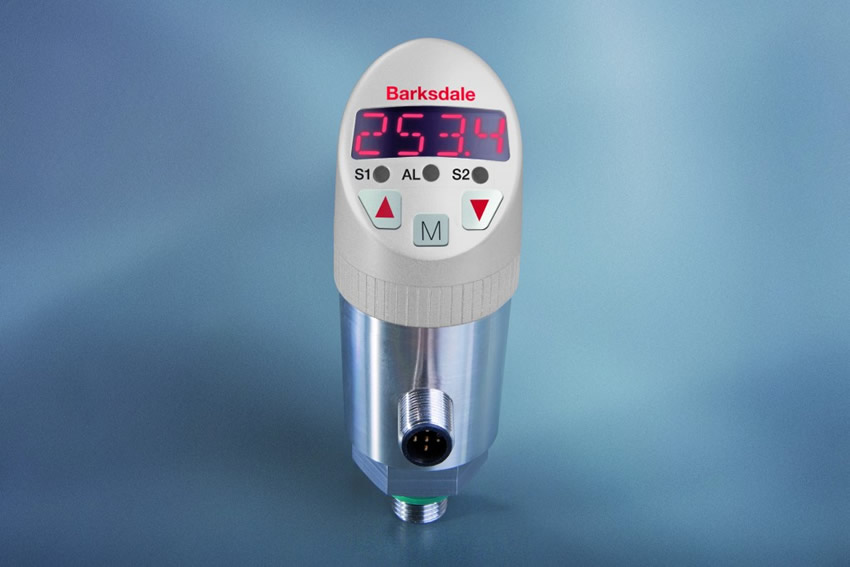|
如何为您的应用选择正确的压力开关
How to select the correct pressure switch for your application
选择压力开关的最重要因素是在开始选择过程之前充分了解您的要求。 有了这些知识,您必须在做出最终选择时考虑许多参数。 在本文中, Barksdale 讨论了要考虑的要点。
压力开关是最常用的流体控制元件之一。 我们在家中、冰箱、洗碗机和洗衣机中使用它们。 我们在工业环境、 液压 和 气动系统 、注塑机和润滑监测中使用它们。 每当我们处理气体或液体时,我们几乎总是需要控制压力。
我们的家用电器不要求高精度,也不会经历高循环率。 相比之下,工业机械和系统中使用的压力开关必须坚固、可靠、准确并具有较长的生命周期。
大多数时候我们从不考虑 压力开关 。 他们只是与造纸机、空气压缩机或泵组等机械一起出现。 在此类设备中,我们依靠压力开关充当安全装置、警报器或系统内的控制元件。 但在大多数情况下,我们在购买时很少考虑这个组件。
注意细节
作为年轻的工程师,我们通常被告知
照顾好细节,其余的会照顾好自己。
为什么要注重细节? 因为趋势是专注于大,昂贵或异国情调。 然而,当我们评估设备性能时,通常是简单或廉价的组件故障导致系统关闭或影响性能。 组件故障的成本可以通过计划外停机、代价高昂的停机时间和生产损失来衡量。
植物中最常见的成分之一是我们可能知道的最少的成分。 当压力开关发生故障时,我们倾向于简单地购买与刚刚发生故障的开关相同的替换件。 然而,如果我们要提高我们工厂的性能,我们就应该打破这种模式。 我们需要考虑什么最能满足我们的需求,而不是简单地用“like for like”替换开关。

选择压力开关
当工程师考虑压力开关时,通常有三种情况:
- 当液压或气动系统出现故障时。
- 购买包含压力开关的设备或系统时。
- 在设计内部系统时。
当压力开关发生故障时,工程师通常会自行决定是否应该简单地用相同的产品更换开关或尝试升级到更好的产品。 要确定是否应使用不同的压力开关,以下过程可能很有用。
首先,确定当前使用 的开关类型 及其操作规范。 此信息应打印在交换机标签上。 如果不是,请联系 OEM 或开关制造商。 然后,确定故障模式。 例如,如果开关未在所需压力下启动,则问题可能是循环疲劳。 了解系统动态和开关类型将有助于诊断问题。
最后,根据故障模式,考虑将开关更换为更能满足系统动态和操作需求的开关。 目标是消除故障模式。 在此示例中,如果当前使用的开关类型是隔膜开关并且系统快速循环,则解决方案可能是在精度不成问题的情况下选择隔膜活塞开关,或者选择固态开关以获得更高的精度和快速循环.
选择压力开关时要考虑的四个选项
在购买包含压力开关的设备或系统时,工程师至少有四种选择:
- 您可以指定开关类型、型号和制造商。 这对于复杂系统来说可能很困难,尤其是在系统动力学未知的情况下。
- 您可以指定诸如“压力开关的额定寿命至少为 100 万次,精度为 0.50% 等”之类的特性,并由供应商选择正确的开关。
- 结合这两种方法。 例如,指定质量开关制造商,如 Barksdale,最小循环寿命和精度。
- 只是什么都不做,希望最好。
了解每个压力开关的优缺点
幸运的是,在设计您自己的系统时,识别操作参数和关键开关特性相对容易。 这使您可以优化与您的特定需求相关的准确性、寿命、易用性和其他重要功能。 您只需要知道每种压力开关设计必须提供的优点和限制。
要积极主动地为应用程序指定正确的开关,或成功更换有问题的开关,必须了解可用的开关类型及其优缺点。 此外,与所有专业一样, 压力开关 有自己独特的语言和术语,需要简单理解以改善沟通。
有关 Barksdale 全系列开关产品的更多信息,请联系 010-84282935 或访问 www.barksdaleproducts.com。
How to select the correct pressure switch for your application
The most important factor in selecting a pressure switch is to fully understand your requirements before beginning the selection process. Armed with that knowledge, you must consider a number of parameters in making a final selection. In this article, Barksdale discusses the main points to consider.
Pressure switches are one of the most commonly used fluid control components. We use them at home, in our refrigerators, dishwashers and washing machines. We use them in industrial settings, in hydraulic and pneumatic systems , injection moulding machines and lubrication monitoring. Whenever we handle a gas or liquid we almost always need to control the pressure.
Our home appliances do not demand high accuracy, nor do they experience high cycle rates. By contrast, the pressure switches used in industrial machinery and systems must be rugged, dependable, accurate and have a high lifecycle.
Most of the time we never think about pressure switches . They just show up with such machinery as paper machines, air compressors or pump sets. In this type of equipment, we depend upon pressure switches to act as safety devices, alarms, or as the control element within the system. But in most cases we give little consideration to this component when we make a purchase.
Take care of the details
As young engineers, we're commonly told to
take care of the details and the rest will take care of itself.
Why the focus on details? Because the tendency is to focus on the big, the expensive or the exotic. However, when we evaluate equipment performance, it is often the simple or inexpensive component failure that shuts a system down or affects performance. The cost of component failure can be measured in unscheduled outages, costly down-time and lost production.
One of the most common components in the plant is the one we may know least about. When a pressure switch fails, we tend to simply buy a replacement that is a duplicate of the one that just failed. If we are to improve the performance of our plants, however, we should break this paradigm. Rather than simply replacing the switch with "like for like," we need to consider what will best meet our needs.
Choosing a pressure switch
There are typically three situations when an engineer thinks about pressure switches:
- When a hydraulic or pneumatic system fails.
- When equipment or a system containing a pressure switch is purchased.
- When designing an in-house system.
When a pressure switch fails, the engineer is generally on his own in trying to figure out if he should simply replace the switch with the same product or try to upgrade to something better. To determine if a different pressure switch should be used, the following process can be useful.
First, Identify the type of switch currently being used and its operating specifications. This information should be printed on the switch label. If it isn't, contact the OEM or the switch manufacturer. Then, determine the failure mode. For example, if the switch does not actuate at the desired pressure, the problem could be cycle fatigue. Understanding system dynamics and the type of switch will help in diagnosis of the problem.
Finally, based on the failure mode, consider replacing the switch with one that better meets your system's dynamics and operating needs. The goal is to eliminate the failure mode. In this example, if the switch type currently used is a diaphragm switch and the system cycles rapidly, the solution could be to select a diaphragm-piston switch if accuracy is not an issue, or a solid-state switch for higher accuracy and rapid cycling.
Your four options to consider when choosing a pressure switch
When purchasing equipment or a system containing a pressure switch, the engineer has at least four options:
- You can specify the switch type, model number and manufacturer. This can be difficult for complex systems, especially if the system dynamics are not known.
- You can specify features such as, "Pressure switches shall be rated for a minimum life of 1.0 million cycles, an accuracy of 0.50 per cent, etc.", and leave it up to the vendor to select the correct switch.
- Combine the two approaches. For example, specify a quality switch manufacturer, such as Barksdale, the minimum cycle life and accuracy.
- Simply do nothing and hope for the best.
Know each pressure switch's strengths and weaknesses
Fortunately, when designing your own system it is relatively easy to identify operating parameters and critical switch characteristics. This allows you to optimize accuracy, life, ease of use, and other important features as they relate to your specific needs. All you need to know is the advantages and limitations each pressure switch design has to offer.
To be proactive and specify the correct switch for the application, or to successfully replace a problem switch, one must know the types of switches available and their strengths and weaknesses. Also, as with all specialties, pressure switches have their own unique language and terminology which needs to be understood simply to improve communications.
For more information about Barksdale's full range of switch products please contact 010-84282935 or visit www.barksdaleproducts.com.
|

